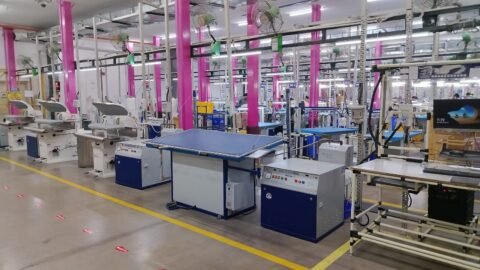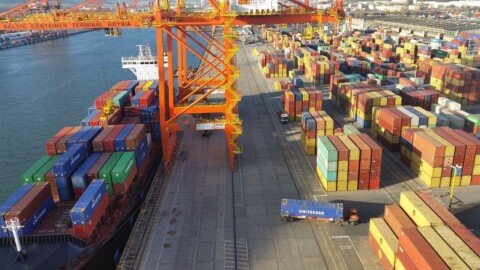There’s no doubt about it – technology has not only changed the way we work and live, it’s also pushing boundaries in the way we do business. For instance, e-commerce has become the norm rather than an option today. We’re now used to the luxury of everything being just a click away or at our fingertips. With options like premier delivery services it is possible to receive an order within an hour of placing it. This was unheard of until about five years ago and in the years ahead, it is quite possible that there will be further disruption with the advent of technology and blurring of boundaries.
According to Global Total Logistics Market Report the pandemic has had highly complex and nuanced effects on supply chains, despite which the sector is expected to grow by 4.7% through to 2024. All over the world, supply chains are being transformed by the development of a more digitalised environment, where value chains are connected, and distribution systems are increasingly intelligent, autonomous and automated. The pace of advancements here is rapid and has led to huge impacts in flexibility, efficiency and automation of distribution. The fundamental building blocks of Industry 4.0 are driving innovation in supply chain and as companies seek to make their supply chains more efficient, the adoption of these new technologies into operations is becoming more prevalent.
It’s tough to delink technology from all this. This has allowed companies in logistics and supply chain management – both legacy brands and emerging ones – to forecast their requirements, deploy effective solutions and put in place measures leading to better efficiencies. Here are some of the trends that will act as the torch-bearers for the future of this industry.
Data-driven decisions
The global internet of things (IoT) in logistics market size was $34,504.8 million in 2019, and it is projected to grow with a CAGR of 13.2% between 2020 to 2030, as per IoT in Logistics Market Research Report. IoT has opened up a plethora of opportunities for supply chain. As a result of this, sensors are built into cabs, cargo ships, trains, etc., and connect to an alarm system or dispatcher that is monitoring and tracking.
In addition to this, there is a new influence that is emerging that could have a far-reaching impact on the supply chain— Big Data. Using data to understand patterns and streamline operations will help logistics firms deploy a more sustainable and efficient strategy. This is indicative of an interesting future where a typical logistics provider and vendor in the market will evolve to a more consulting-driven approach and become more like project managers, rather than actual movers of cargo.Making data-driven decisions have multiple benefits that include better supply chain visibility, demand forecasting, proactive line-haul planning, predictive maintenance, unexpected conditions detection, and last-mile delivery improvements.
Automation for smooth operations
Automation, alongside machine learning and artificial intelligence, are cornerstone components of the Supply Chain 4.0 concept (i.e. the next-generation digital supply chain). According to Colliers International, it is expected that online demand will outstrip demand for warehouses. Remodeling the global supply chain in the post-COVID world is essential.With e-commerce poised for further growth it becomes key for logistics companies to earmark investments in automation technologies within supply chain processes to meet fast-evolving omni-channel requirements.
Smart use of technology will also allow operators to forecast all their requirements including operating expenses, personnel time and other necessary capacities. Taking things a step further, technology like augmented reality, artificial intelligence, and the omniscient control towers can be game-changers as they will help enable automating processes and sharing of transparent and shareable data.
Use of Digital Twins
Digital twins are possibly one of the most exciting logistics technology trends to keep an eye on in 2021. This is drastically changing how the sector works: Now, physical and digital worlds can be melded into one, thus allowing, for the first time, to engage with the digital model of a physical object or part just like we would with their physical counterparts.
Warehouses and facilities can also use the technology to create accurate 3D models of their centers and experiment with layout changes or the introduction of new equipment to see their impact, risk-free. Furthermore, logistics hubs are able to create digital twins and use those to test out different scenarios and increase efficiency.A digital twin can enablecompaniesto introspect to identify bottlenecks and deploy solutions that will lead to better productivity. This can include measures like eliminating certain steps on a manufacturing production line, adjusting product formulations,rethinking package design and so on.
Increasing focus on sustainability
Sustainability is a trend that has been cutting across industries and logistics is no exception. Consumers are considering environmental impacts in their purchasing decisions while governments across the globe are instituting more stringent regulations, according to State of Logistics Annual Report. The importance of sustainability in a supply chain extends beyond going green. A supply chain built on a sustainable platform creates more partnership opportunities because environmental responsibility is a crucial focal point in today’s industry.
To lessen the negative environmental impact, companies leverage a plethora of technologies, from actual electric vehicles to AI-based software that calculates the route with the lowest generated emissions.
In today’s day and age, it is difficult to escape the effect of technology in our lives. As per The India Transport Management System Market Report 2021, transport management system (TMS) market in India is estimated to register double-digit CAGR from 2019 to 2028. One of the factors that is accelerating this change is evolving consumer preferences and online shopping. It is quite possible that these habits are likely to stay in the post-COVID world as well, which means that the logistics and supply chain industry of the future will need to focus on optimisation of technology and automation for safe and efficient movement of goods. This also means that the supply chain of tomorrow will be leaner, faster and most importantly, self-orchestrated.







